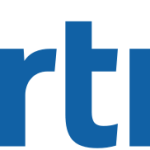- 産業: Consulting
- Number of terms: 1807
- Number of blossaries: 2
- Company Profile:
Gartner delivers technology research to global technology business leaders to make informed decisions on key initiatives.
“Process templates” is an overarching term that describes prebuilt business process design, execution and management artifacts that accelerate time to solution. They are also known by various names, such as “solution frameworks,” “solution templates,” “solution kits,” “starter kits,” “process accelerators” and “process pods.” Process templates are available from application and middleware vendors ? as well as from consulting and system integration (C&SI) companies, outsourcing firms and cloud service providers.Typically, process templates are graphical and are based on process flows, rules or service-oriented architecture (SOA). The contents vary dramatically by provider. Some offer simple visual process models that are useful in jump-starting discussions about target processes for improvement. Others provide prebuilt detailed process models, technical reference models, candidate service definitions, technical service libraries, rule sets, user interface templates, simulation scenarios, recommended governance policies, delivery and deployment guides, and process improvement methodologies.
Industry:Technology
Manufacturing that adds value by performing chemical reactions or physical actions to transform materials, or by extracting, mixing, separating or forming materials in batch or continuous production modes.
Industry:Technology
Process management is a management concept that describes the goal of increasing intraenterprise coordination of separate business functions. Business process re-engineering is a form of process management that focuses on replacing traditional functions (e.g., sales, marketing and service) with functionally integrated processes (e.g., customer relationship management). The growth in the demand for enterprise software reflects the need for increased integration and sharing of business information throughout an enterprise.
Industry:Technology
The regulation of variables that influence or control the conduct of a process so that a specified quality and quantity of product are obtained.
Industry:Technology
A subtractive color model used in color printing. This color model is based on mixing pigments of the following colors to make other colors: cyan, magenta, yellow and black.
Industry:Technology
Process analytical technology (PAT) is a system for analysis and control of manufacturing processes that measures critical quality parameters and performance attributes of raw and in-process materials. It enables in-process data to be used for assessing the quality of a batch during manufacture, significantly reduces the need for finished product testing, and as a result, improves lead times.
Industry:Technology
The core function of a customer service and support (CSS) application used by call centers. It coordinates a multitier, multiowner service and support environment, enables pattern analysis, provides management reports, and facilitates requesting additional service and support resources by providing hard numbers on the service workload and its changing nature. Because PM tools can also track service-level agreements (SLAs), they are valuable for monitoring compliance.
Industry:Technology
The confidential half of the asymmetric key pair used in public-key cryptography. Unlike the “secret key” used in symmetric-key cryptography — a single key known by both the sender and the receiver — a private key is known only by the recipient. See public-key cryptography and secret-key cryptography.
Industry:Technology
An internal telephone exchange serving a single organization and having no connection with a public exchange. Also private automatic exchange (PAX). Other types of private exchange include:
1. Private automatic branch exchange (PABX): A private automatic telephone exchange that provides for the transmission of calls internally and to and from the public telephone network. Also private branch exchange (PBX).
2. Private automatic telex exchange (PATX): Provides telex service within and without an enterprise (largely obsolete).
3. Private manual branch exchange (PMBX): Private, manually operated telephone exchange that provides private telephone service to an organization and allows calls to be transmitted to or from the public telephone network.
4. Private digital exchange (PDX): Private exchange employing digital transmission techniques.
Industry:Technology
A telephone switching system on a customer’s premises that allows telephones to interface with one or more public switched telephone network, or a private voice network when the user dials an access code.
Industry:Technology
